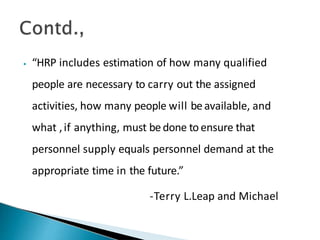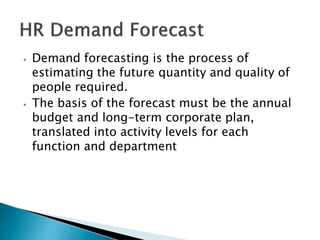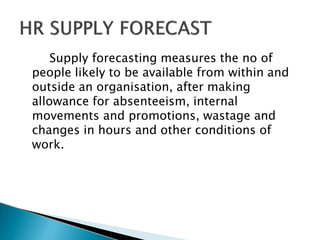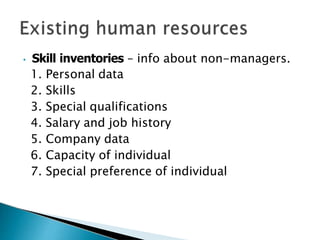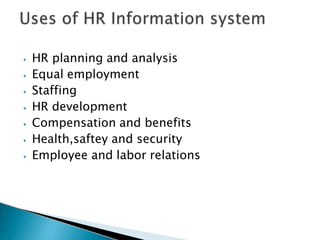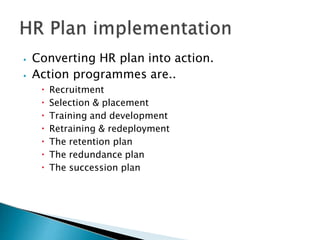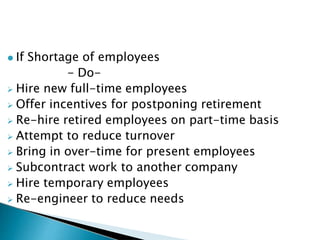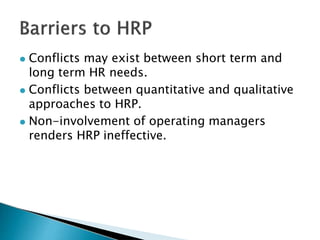The document discusses human resource planning, which involves forecasting future human resource needs and the availability of personnel, then developing programs to ensure the organization has the right number and type of employees. It covers determining demand through different forecasting techniques, assessing current and future supply, identifying surpluses or shortages, and developing action plans to address gaps through recruitment, training, or redundancy programs. The goal is to help the organization meet its objectives by having the optimal human resources at the right time.



